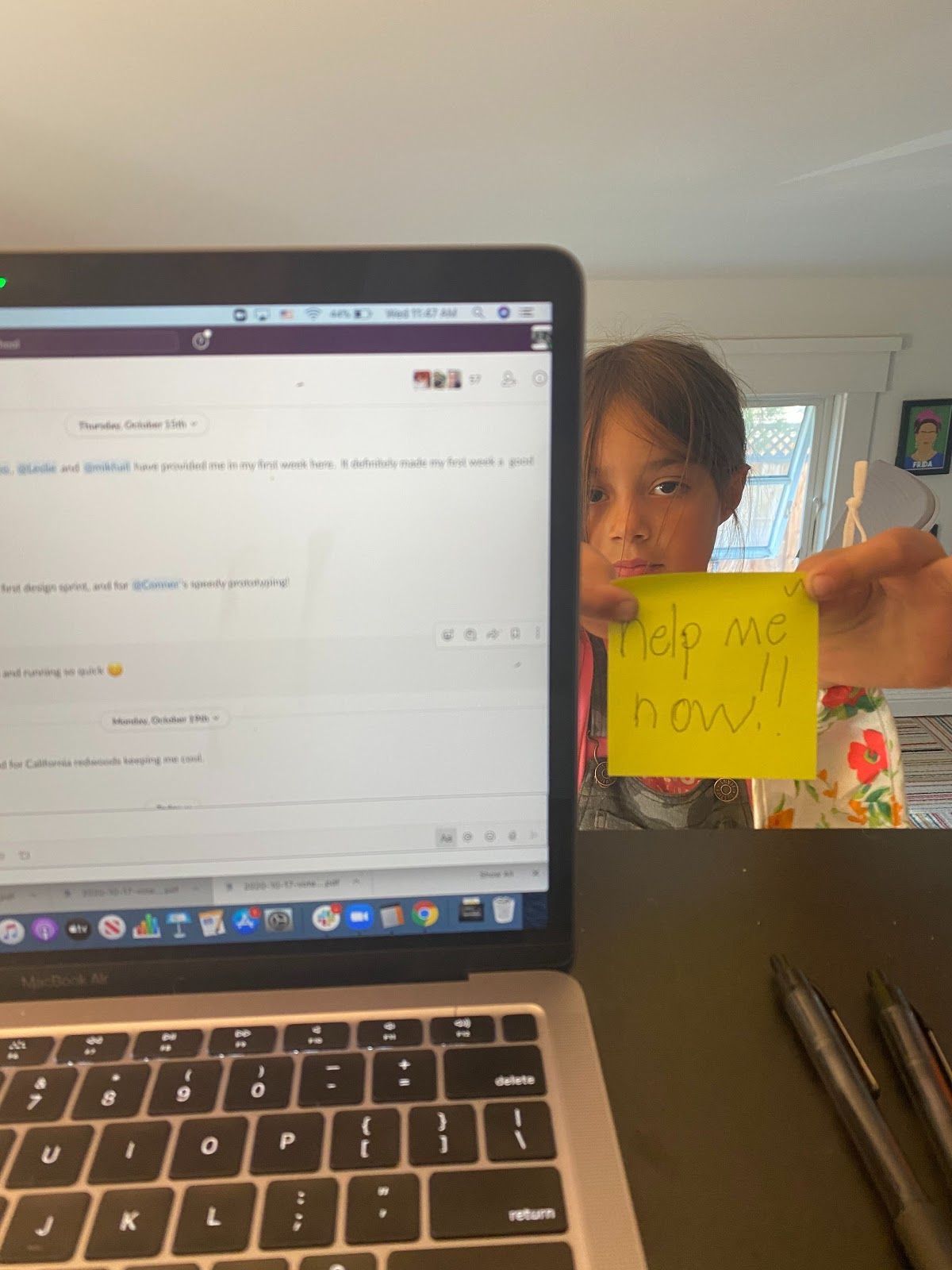To keep women working during the pandemic, companies must do more
As I type this at 5:36 AM, I’m reminded of the running joke in my family. I don’t work 9-5. It’s more like 5-9 (and that’s am to pm)
This schedule is not the result of a job that demands too much of me. It’s the result of having any job at all while trying to also be a mom. This balance has always presented challenges, but in the era of COVID, the role has transitioned from “hard to do” to “nearly impossible.”
The parts of my day when my daughters are remote learning are not necessarily quiet for me. They come and find me with questions, holding up post-it notes that ask for help, or pantomiming like a bad game of charades. They can’t log in, don’t understand, suddenly remember a conversation from a week ago in the car and want to follow up, or somehow forgot how to fill their own water bottle.

Because the school day ends earlier than a typical school day, I can choose to be present or know that without my husband or I there they will fall into a rabbit hole of watching useless life hacks on Youtube.
So a few days a week I choose to be present. All my work cannot possibly get done while they are awake, so instead I sneak some in between 5 am and 8:00 am, then again from 8:30 pm to 10 or 11.
I am both always working and always caring for my kids, which makes me both exhausted and incredibly lucky: many women lack the support, the infrastructure, and the flexibility that makes this possible.
COVID’s impact on the workforce affects women more
The number of women leaving the workforce due to COVID-19 is staggering. In September, 1.1M Americans left their jobs or stopped looking for work and 865,000 of them (80%) were women. This means women left the workforce at 4x the rate of men.
It feels both unfathomable and inevitable that this pandemic, the school closures and the recession have led us to this moment - women have always shouldered more of the burden of household, childcare and eldercare responsibilities - and yet so many of us have had to read the numbers again and again to fully comprehend what this means. This isn’t something that will impact us only now in 2020; it will impact women and our children for decades.
I am one of a small group of moms who share the household burdens (mostly) with my partner. Most women, though, can relate to the recent New York Times headline, which said ”Nearly Half of Men Say They Do Most of the Homeschooling. 3 Percent of Women Agree”.
The pandemic isn't something that will impact us only now in 2020; it will impact women and our children for decades.
Someone has to take care of the children when schools are not an option. The default is a 1950s conception of gender roles, with women stepping up if their husbands do not. In conversations with my female friends (some still working and others who have dropped out), we have all lamented that even if our husbands do help, and help significantly, it is exhausting and overwhelming to not only work and care for our kids, but to teach them as well.
At the same time, the emotional needs of our children are higher than ever. We must be their mother, their teacher and their playmate, too. We must help them understand a world that is different from anything they have ever known, all while doing that same processing for ourselves in real time. Like I said, we are always tired.
How companies can support women now and beyond
These issues are systemic. I could spend considerable time talking about the broader societal changes we need to make to address them at a federal and state policy level. I could spend an equal amount of time lamenting the virus that put us here.
But those changes will take time, and none of us have that right now. Even as I type this, I’m listening nervously because my dog may have woken up a child who will soon interrupt me. So instead, I’d like to focus on a few actions companies might take to support their women workers.
Reach out and tell them you support them. Do it 1:1 in meetings where they can tell you what they need, and do it company-wide so everyone else hears it, too.
Provide benefits and policies to ease their burdens. This can take many forms. Here are some possibilities:
- Remove mandated working hours when possible, notably white collar information economy roles. When set working hours are required, increase flexibility and the ease of switching or missing shifts.
- Provide more childcare and eldercare benefits, giving working moms time to focus on uninterrupted work. Many companies use Outschool so families whose children are at home can stay engaged and occupied, freeing parents up to work and allowing children to pursue passions in a safe, social environment. For frontline workers, consider offering onsite childcare options in addition to virtual or offsite ones.
- Include benefits like home delivery of food or groceries.
Pay women the way you pay men. Families often make the choice for one parent to leave the workforce based on whose income is easier to give up. If women were paid the same as men for the same work, the disparity between women versus men leaving the workforce would not look like it does today.
Not because of a crisis, but because of a shared humanity
We are living through unprecedented times, which exacerbates the need for these changes. However, companies should act on these suggestions not because their employees are in a crisis, but because their employees are human and because we should take care of each other.
According to the Working Mothers Issue Brief, U.S. Department of Labor, 25.1 million working mothers have a child under the age of 18 living at home in the US. We cannot stand by while these women lose or leave their jobs.
To the companies that have long worried about women exiting the workforce, but have failed to address the underlying issues: now is the time to make a change.

